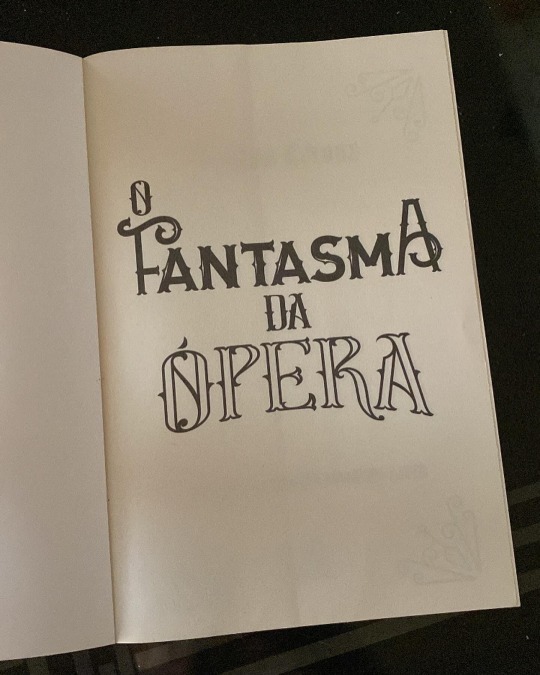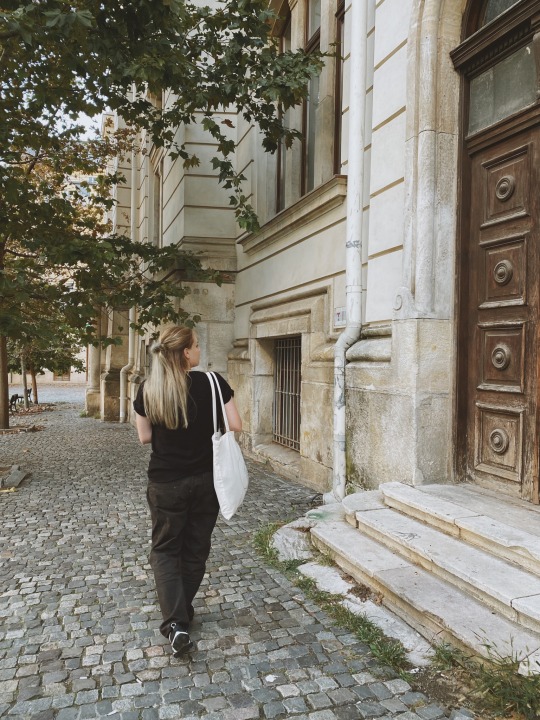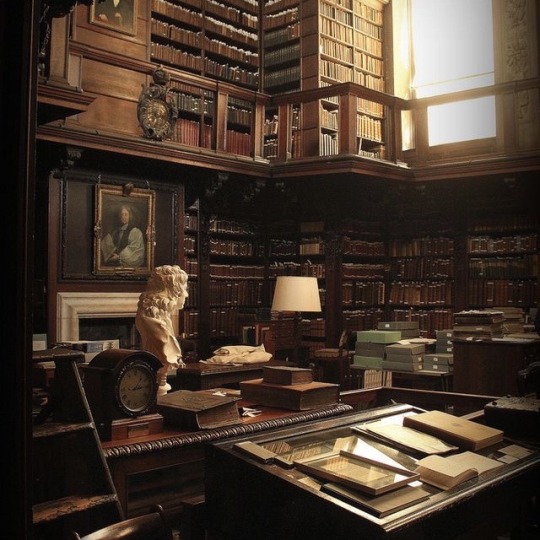#scholarly literature
Text




#dark academia#light academia#dark academia aesthetic#books#dark academism#books & libraries#academia aesthetic#library date#dark moodboard#scholarly academia#chaotic academia#light academism#bookish#literature#reading#book#chaotic academic aesthetic#book worm#booklover#book aesthetic
5K notes
·
View notes
Text




la prima notte di quiete (1972)
#sonia petrovna#la prima notte di quiete#italian film#movies#film#academia#dark academia#dark academia aesthetic#alain delon#french#french girl#literature#reading#books#bookish#academia aesthetic#study aesthetic#scholarly academia#scholarly aesthetic#indian summer#⊹ ִֶָ𓏲࣪
5K notes
·
View notes
Text

#light academia#quotes#classic academia#women in stem#literature#history#soft academia#dark academia#chaotic academia#light academism#humanities#english#english major#social science#music#women in music#women in history#Women in phlegm#scholarship#scholarly academia#phd scholar#dark academism#light acamedia#dark acamedia#english lit student#academia aesthetic#literary quotes#classic literature#reading
844 notes
·
View notes
Text
which one of ou motherfukcers wrote a jstor article about. me

25 notes
·
View notes
Text
how can i romanticise studying at awfully modern university? the building is fairly new and of course everything is technically advanced. but there is no soul in it
what should i do to feel very dark academia mysterious historic beautiful classical aesthetic?
i need help i ain’t agreeing with my university years being so basic
#university#college#dark academia#dark acadamia aesthetic#aestethic#classical music#mysterious#romantique#romanticisation#literature#the secret history#if we were villains#scholarly academia#ivy league
67 notes
·
View notes
Text
Need you all to know that I wrote my midterm for my college art history class on homoeroticism in the Epic of Gilgamesh and other Ancient Mesopotamian Art. I went as far as to read papers about burial and mourning practices. My professor? Loved it.
#I'm still getting recommended scholarly articles about their culture#it goes so hard#i read one on sumerian grammer??#life changing#not really but#it went hard#and fed my autism#gilgamesh#enkidu#gilgamesh x enkidu#funny#meme#school#writing#ancient#ancient art#poems#lit#literature#the epic of gilgamesh#i am willing to provide a copy
53 notes
·
View notes
Text
An AMENDED Rundown on the Absolute Chaos That is First Quarto Hamlet
O, gather round me, my dear Shakespeare friends
And let me tell to ye a tale of woe.
It was a dark and drizzly winter night,
When I discovered my life was a lie...
This tale is a tragedy, one of Shakespeare sources turned into gardening websites, "misdated" quartos, and failed internet archives. It is also a story of the quarto itself, an early printing of our beloved Danish Prince's play, including an implied Hamlet/Horatio coffee date, weird and extremely short soliloquies, and Gertrude with a hint of motivation and autonomy.
But let us start from the beginning. Long ago, in the year of our lord 2022, I pulled a Christmas Eve all-nighter to bring you this post: https://www.tumblr.com/withasideofshakespeare/704686395278622720/a-rundown-on-the-absolute-chaos-that-is-first?source=share
It was popularish in Shakespeare circles, which is why I am amending it now! I returned to it tonight, only to discover a few problems with my dates and, more importantly, a mystery in which one of my sources miraculously turned into a link to a gardening website...
Anyhow, let us begin with the quarto!
TL;DR: Multiple versions of Hamlet were printed between 1603 and 1637 (yes, post-folio) with major character and plot differences between them. The first quarto (aka Q1) is best known for its particular brand of chaos with brief soliloquies, an extra-sad Hamlet, some mother-son bonding, weird early modern spelling, and deleted/adapted scenes with major influences on the plot of the play!
A long rundown is included below the cut, including new and improved sources, lore, direct quotes, and my own interpretations. Skip what bores you!
And continue... if thou darest!
What is the First Quarto? Actually, what is a quarto?
Excellent questions, brave Hamlet fan!
A quarto is a pamphlet created by printing something onto a large sheet of paper and then folding it to get a smaller pamphlet with more pages per big sheet (1).
First Quarto Hamlet was published in 1603 and then promptly lost for an entire two centuries until it was rediscovered in 1823 in the library of Sir Henry Bunbury. Rather than printed from a manuscript of Shakespeare, Q1 seems like it may be a memorial reconstruction of the play by the actor who played Marcellus (imagine being in a movie, memorizing the script to the best of your ability, writing it down, and then selling "your" script off to the print shop), but scholars are still out on this (2).
Are you saying that Hamlet comes with the stageplay equivalent of a “deleted scenes and extra credits” movie disc?
Yep, pretty much! In fact, there are even more of these! Q2 was printed in 1604 and it seems to have made use of Shakespeare's own drafts, and rather than being pirated like Q1, it was probably printed more or less with permission. Three more subsequent quartos were published between 1611 and 1637, but they share much in common with Q2.
The First Folio (F1) was published in 1623 and its copy of Hamlet was either based on another (possibly cleaner but likely farther removed from Shakespeare's own text) playhouse manuscript (2, 3). It was an early "collected works" of sorts--although missing a few plays that we now consider canon--and is the main source used today for many of the plays!
The versions of the play that we read usually include elements from both Q2 and F1.
So... Q1? How is it any different from the version we all know (and love, of course)? What do the differences mean for the plot?
We’ll start with minor differences and build up to the big ones.
Names and spellings
Most of the versions of Shakespeare's plays that we read today have updated spellings in modern English, but a true facsimile (a near-exact reprint of a text) maintains the early modern English spellings found in the original text.
For example, here is the second line of the play transcribed from F1:
Francisco: Nay answer me: stand and vnfold your selfe.
For the most part, however, the names of the characters in these later versions (ex: F1) are spelled more or less how we would spell them today. This is not so in Q1.
Laertes is “Leartes”, Ophelia is “Ofelia”, Gertrude is “Gertred” (or sometimes “Gerterd”), Rosencrantz is “Rossencraft”, Guildenstern is “Gilderstone”, and my favorite, Polonius gets a completely different name: Corambis.
(This goes on for minor characters, too. Sentinel Barnardo is “Bernardo”, Prince Fortinbras of Norway is “Fortenbrasse”, Voltemand and Cornelius--the Danish ambassadors to Norway--are “Voltemar” and “Cornelia” (genderbent Cornelius?), Osric doesn’t even get a name- he is called “the Bragart Gentleman”, the Gravediggers are called clowns, and Reynaldo (Polonius’s spy) gets a whole different name--“Montano”.)
2. Stage directions
Some of Q1's stage directions are more detailed and some are simply non-existent. For instance, when Ophelia enters singing, the direction is:
Enter Ofelia playing on a Lute, and her haire downe singing.
But when Horatio is called to assist Hamlet in spying on Claudius during the play, he has no direction to enter, instead opting to just appear magically on stage. Hamlet also doesn't even say his name, so apparently his Hamlet sense was tingling?
3. Act 3 scene reordering
Claudius and Polonius go through with the plan to have Ophelia break up with Hamlet immediately after they make it (typically, the plan is made in early II.ii and gone through with in III.i, with the players showing up and reciting Hecuba between the two events). In this version, the player scene (and Hamlet’s conversation with Polonius) happen after ‘to be or not to be’ and ‘get thee to a nunnery.’ I’m not sure if this makes more or less sense. Either way, it has a relatively minimal impact on the story.
4. Shortened lines and straightforwardness
Many lines, especially after Act 1, are significantly shortened, including some of the play's most famous speeches.
Laertes’ usually long-winded I.iii lecture on love to Ophelia is shortened to just ten lines (as opposed to the typical 40+). Polonius (er... Corambis) is still annoying and incapable of brevity, but less so than usual. His lecture on love is also cut significantly!
Hamlet’s usual assailing of Danish drinking customs (I.iv) is cut off by the ghost’s arrival. He’s still the most talkative character, but his lines are almost entirely different in some monologues, including ‘to be or not to be’! In other spots, however, (ex: get thee to a nunnery!) the lines are near-identical. There doesn’t seem to be much rhyme or reason to where things diverge linguistically, except that when Marcellus speaks, his lines are always correct. Hm...
5. The BIG differences: Gertrude’s promise to aid Hamlet in taking revenge
Act 3, scene 4 goes about the same as usual with one major difference: Hamlet finishes off not with his usual declaration that he’s to be sent for England but with an absolutely heart-wrenching callback to act 1, in which he echoes the ghost’s lines and pleads his mother to aid him in revenge. And she agrees. Here is that scene:
Note that "U"s are sometimes "V"s and there are lots of extra "E"s!
Queene Alas, it is the weakenesse of thy braine,
Which makes thy tongue to blazon thy hearts griefe:
But as I haue a soule, I sweare by heauen,
I neuer knew of this most horride murder:
But Hamlet, this is onely fantasie,
And for my loue forget these idle fits.
Ham. Idle, no mother, my pulse doth beate like yours,
It is not madnesse that possesseth Hamlet.
O mother, if euer you did my deare father loue,
Forbeare the adulterous bed to night,
And win your selfe by little as you may,
In time it may be you wil lothe him quite:
And mother, but assist mee in reuenge,
And in his death your infamy shall die.
Queene Hamlet, I vow by that maiesty,
That knowes our thoughts, and lookes into our hearts,
I will conceale, consent, and doe my best,
What stratagem soe're thou shalt deuise.
Ham. It is enough, mother good night:
Come sir, I'le prouide for you a graue,
Who was in life a foolish prating knaue.
Exit Hamlet with [Corambis/Polonius'] dead body.
(Internet Shakespeare, Source #4)
Despite having seemingly major consequences for the plot, this is never discussed again. Gertrude tells Claudius in the next scene that it was Hamlet who killed Polonius (Corambis, whatever!), seemingly betraying her promise.
However, Gertrude’s admission of Hamlet’s guilt (and thus, betrayal) could come down to the circumstance she finds herself in as the next scene begins. There is no stage direction denoting her exit, so the entrance of Claudius in scene 5 may be into her room, where he would find her beside a puddle of blood, evidence of the murder. There’s no talking your way out of that one…
6. The BIGGEST difference: The added scene
After Act 4, Scene 6, (but before 4.7) comes this scene, in which Horatio informs Gertrude that Hamlet was to be executed in England but escaped:
Enter Horatio and the Queene.
Hor. Madame, your sonne is safe arriv'de in Denmarke,
This letter I euen now receiv'd of him,
Whereas he writes how he escap't the danger,
And subtle treason that the king had plotted,
Being crossed by the contention of the windes,
He found the Packet sent to the king of England,
Wherein he saw himselfe betray'd to death,
As at his next conuersion with your grace,
He will relate the circumstance at full.
Queene Then I perceiue there's treason in his lookes
That seem'd to sugar o're his villanie:
But I will soothe and please him for a time,
For murderous mindes are alwayes jealous,
But know not you Horatio where he is?
Hor. Yes Madame, and he hath appoynted me
To meete him on the east side of the Cittie
To morrow morning.
Queene O faile not, good Horatio, and withall, commend me
A mothers care to him, bid him a while
Be wary of his presence, lest that he
Faile in that he goes about.
Hor. Madam, neuer make doubt of that:
I thinke by this the news be come to court:
He is arriv'de, obserue the king, and you shall
Quickely finde, Hamlet being here,
Things fell not to his minde.
Queene But what became of Gilderstone and Rossencraft?
Hor. He being set ashore, they went for England,
And in the Packet there writ down that doome
To be perform'd on them poynted for him:
And by great chance he had his fathers Seale,
So all was done without discouerie.
Queene Thankes be to heauen for blessing of the prince,
Horatio once againe I take my leaue,
With thowsand mothers blessings to my sonne.
Horat. Madam adue.
(Internet Shakespeare, Source #4)
First of all, the implication of Hamlet and Horatio's little date in the city is adorable ("Yes Madame, and he hath appoynted me / To meete him on the east side of the Cittie / To morrow morning.") It reads like they're going out for coffee!
And perhaps more plot relevant: if Gertrude knows of Claudius’s treachery ("there's treason in his lookes"), her death at the end of the play does not look like much of an accident. She is aware that Claudius killed her husband and is actively trying to kill her son and she still drinks the wine meant for Hamlet!
Now, the moment we’ve all been waiting for! My thoughts! Yippee!
On Gertrude:
WOW! I’m convinced that she is done dirty by F1and Q2! She and Hamlet have a much better relationship (Gertrude genuinely worries about his well-being throughout the play.) She has an actual personality that is tied into her role in the story and as a mother. I love Q1 Gertrude even though in the end, there’s nothing she can do to save Hamlet from being found out in the murder of Polonius and eventually dying in the duel. Her drinking the poisoned wine seems like an act of desperation (or sacrifice? she never asks Hamlet to drink!) rather than an accident.
On the language:
I think Q1′s biggest shortcoming is its comparatively simplistic language, especially in 'to be or not to be,' which is written like this in the quarto:
Ham. To be, or not to be, I there's the point,
To Die, to sleepe, is that all? I all:
No, to sleepe, to dreame, I mary there it goes,
For in that dreame of death, when wee awake,
And borne before an euerlasting Iudge [judge],
From whence no passenger euer retur'nd,
The vndiscouered country, at whose sight
The happy smile, and the accursed damn'd.
But for this, the ioyfull hope of this,
Whol'd beare the scornes and flattery of the world,
Scorned by the right rich, the rich curssed of the poore?
The widow being oppressed, the orphan wrong'd,
The taste of hunger, or a tirants raigne,
And thousand more calamities besides,
To grunt and sweate vnder this weary life,
When that he may his full Quietus make,
With a bare bodkin, who would this indure,
But for a hope of something after death?
Which pusles [puzzles] the braine, and doth confound the sence,
Which makes vs rather beare those euilles we haue,
Than flie to others that we know not of.
I that, O this conscience makes cowardes of vs all,
Lady in thy orizons, be all my sinnes remembred.
(Internet Shakespeare, Source #4)
The verse is actually closer to perfect iambic pentameter (meaning more lines have exactly ten syllables and consist entirely of iambs--"da-DUM") than in the Folio, which includes many 11-syllable lines. The result of this, however, is that Hamlet comes across here as considerably less frantic (those too-long verse lines in F1 make it feel like he is shoving words into too short a time, which is so very on-theme for him) and more... sad. Somehow, Q1 Hamlet manages to deserve a hug even MORE than F1 Hamlet!
Nevertheless, this speech doesn't hit the way it does in later printings and I have to say I prefer the Folio here.
On the ending:
The ending suffers from the same effect ‘to be or not to be’ does--it is simpler and (imo) lacks some of the emotion that F1 emphasizes. Hamlet’s final speech is significantly cut down and Horatio’s last lines aren’t quite so potent--although they’re still sweet!
Horatio. Content your selues, Ile shew to all, the ground,
The first beginning of this Tragedy:
Let there a scaffold be rearde vp in the market place,
And let the State of the world be there:
Where you shall heare such a sad story tolde,
That neuer mortall man could more vnfolde.
(Internet Shakespeare, Source #4)
Horatio generally is a more active character in Q1 Hamlet. This ending suits this characterization. He will tell Hamlet’s story, tragic as it may be. It reminds me a bit of We Raise Our Cups from Hadestown. I appreciate that this isn't a request but a command: put up a stage, I will tell this story.
Closing notes:
After over a year, it was due time this post received an update. My main revisions were in regard to source verification. Somehow, in the last year or so, one of my old sources went from linking to a PDF of Q1 to a garden website (???) and some citations were missing from the get-go as a result of this being an independently researched post that involved pulling an all-nighter on Christmas Eve (but no excuses, we need sources!)
I have also corrected some badly worded commentary implying that the Folio's verse is more iambic pentameter-y (it's not; in fact, Q1 tends to "normalize" its verse to make it fit a typical blank verse scheme better than the Folio's does--the lines actually flow better, typically have exactly ten syllables, and use more iambs than Q1's) as well as that the spelling in the Folio is any more modern than those in Q1 (they're both in early modern English; I was mistakenly reading a modernized Folio and assuming it to be a transcription--nice one, 17-year-old Dianthus!) Additionally, I corrected the line breaks in my verse transcriptions and returned the block quotations to their original early modern English, which feels more authentic to what was actually written. A few other details and notes were added here and there, but the majority of the substance is the same.
Overall, if you still haven't read Q1, you absolutely should! Once you struggle through the spelling for a while, you'll get used to it and it'll be just as easy as modern English! If you'd prefer to just start with the modern English, I have also linked a modern translation below (source 5).
And finally, my sources!
Not up to citation standards but very user-friendly I hope...
1. Oxford English Dictionary
2. Internet Shakespeare, Hamlet, "The Texts", David Bevington (https://internetshakespeare.uvic.ca/doc/Ham_TextIntro/index.html)
3. The Riverside Shakespeare (pub. Houghton Mifflin Company; G.B. Evans, et al.)
4. Internet Shakespeare, First Quarto (facsimile--in early modern English) (https://internetshakespeare.uvic.ca/doc/Ham_Q1/complete/index.html)
5. Internet Shakespeare, First Quarto (modern English) (https://internetshakespeare.uvic.ca/doc/Ham_Q1M/index.html)
And here conclude we our scholarly tale,
Of sources, citation, and Christmastime too,
Go read the First Quarto! And here, I leave you.
#shakespeare#hamlet#first quarto#first quarto hamlet#classic literature#revisions#hey look at me#having some scholarly merit#i have so much left to learn#which is a darn good thing#how else would i spend my evenings?#the worst part about this#is that it all started because i thought a got a date wrong#but it turns out i didn't#so HA!#but then i realized i got everything else wrong so....#corrections it is!
25 notes
·
View notes
Text
#academia aesthetic#dark academia#light academia#romantic academia#chaotic academia#classic academia#art#books#bookstagram#book#grey academia#cottage academia#art academia#scholarly academia#academia#love#darkacademia#classic lit art#classic lit aesthetic#books and literature#literature
70 notes
·
View notes
Text


the phantom of the opera, a classical goth, and a sunny day are surprisingly being a good match :)
#dark academia#light academia#romantic academia#books#cottage academia#study motivation#studying#studyspo#scholarly academia#the phantom of the opera#classic literature#classic lit memes#classic lit quotes
3 notes
·
View notes
Text
ok so i may or may not be spiralling (unrelated) but i spent the entire 1/2 of my weekend so far on an all-consuming deep-dive about chinese historical swords. this will have implications for my future fanart.
#hey turns out all of the sabres/dao shapes we see in mdzs and the cql make for fun and interesting ways to wield them?#mostly two-handed (which id already guessed based on size before).#so basically nmj and half his sect would be wielding two-handed which they dont??? and isnt that interesting#also 'sabre'/dao being a military/commoner tool compared to the scholarly/aristocratic 'sword'/jian??? juicy#listen i fucking LIVE for class analysis of literature and i am a starving shark who has just sniffed a blood trail i am ON IT#not enough classism in mdzs universe i am actively creating More and then Eating It
6 notes
·
View notes
Text
“Nothing could equal my delight of seeing Clerval... I grasped his hand, and in a moment forgot my horror and misfortune; I felt suddenly, and for the first time during many months, calm and serene joy”
-Victor Frankenstein totally being gay for Henry Clerval
#mary shelly's frankenstein#frankenstein by mary shelley#classic literature#bisexual headcanon#ive been around a lot of straight men and that is not how they talk about other men#its true love dammit these two scholarly poindexters love each other#The creature kills Victor's wife on his wedding day and Victor is like *flatly* 'oh no you fiend'#but when Henry gets killed Victor is so distraught he goes into convulsions and doesn't recover for over a month
50 notes
·
View notes
Text
06.10.22 🕰️📜🍁 romanticize my october






Been a couple of quiet weeks but is all over now, my Masters finally started this week, am looking forward to see how it will be.
Self-cultivation these days:
🀄️ did my daily chinese practice on Duolingo
🍁 regarding my botanical collection i have to say a few words: i am a constant changing person (some might say i am inconsistent, but i am viewing my ever-changing habits as a journey to improve) and since lately i’ve been trying to incorporate more minimalism in my life, i realized that this botanical collection is a waste of time for me and resources. Therefore i will be giving up on this. It’s ok on giving up stuff if it makes rooms for something else.
📖 finally finished reading Letters from a Stoic- Seneca, and man…did i struggled with this one, almost the same as i struggled with Marcus Aurelius, and is such a shame because i love the stoics but their writing…
🎍 counted as 10 minutes daily zen practice by burning incense sticks and enjoying the silence
My journey of self-cultivation is definitely under construction, until i find the right habits for me, i will keep adding or quitting, which is ok. After all, is not about the destination, but about the journey, so is important for me to find joy, authenticity and consistency in building them.
#academia#bookblr#academia aesthetic#studyblr#book#dark academia#antique academia#classic literature#dark acadamia aesthetic#scholarly
48 notes
·
View notes
Text
reading a psychological article that seems legit in the abstract and then the second it gets to the background bro starts talking about Freud and oedipal urges and phallic strengrh and blahblahblah

#it's for a literature class tho and it has been so hard to find anything else with themes relevant to this novel so we must make do. was the#extra 5% for writing on a book no ones ever heard of actually worth it when my peers got to just use straight up scholarly articles on the#novels and authors themselves while I am stuck with History of (suburb it's set in) and article on The role of the father in psychoanalysis#.txt
4 notes
·
View notes
Note
for the odnlb playlist: If I Die Young by The Band Perry. Not any lyric in particular but just the overall theme of a very young person thinking so much about their own death and having this dream of being at peace I think resonates with all the hero's motivations since they were all barely teenagers when this fight started.
ALSO the song is loosely based on Tennyson's The Lady of Shalott which is a whole other can of worms with the paralells to Emilie's curse and to an extent Adrien& Felix's "curse"
the vibes are right for this one!
"If I die young, bury me in satin/ lay me down on a bed of roses/ sink me in the river at dawn/send me away with the words of a love song" it's really sad actually that death is equated so strongly with peace and beauty in this song. you're right lava, some of the odnlb characters do contemplate death like this. especially at the point adrien is in, dying would be peaceful and resftul for him compared to what he's going through in waking life. i love the imagery in this, 10/10. also it reminded me very strongly of @mila-beedoodling interpretation of cat walker in odnlb 👀especially with the roses and pearls.
also that was the first time i've read the lady of shalott and holyyy crap. well @maridotnet you did say i am like tennyson lol little did i know you meant literally.
"She has heard a whisper say/a curse is on her if she stay/to look down to Camelot/she knows not what the curse may be/and so she weaveth steadily"
adrien (and even felix to an extent) is like the lady of shallot, trapped in isolation by a curse. he can't even look or think about what he wants without risking fatal consequences. what those consequences are, he finds out as soon as he breaks the rules.
#good soup lava#don't think i missed how you slipped another worm reference into your ask#referencing and citing other mutuals along with songs and literature makes me feel very scholarly#this post is academic now#good work today class#your only homework is to read#odnlb#one does not love breathing#odnlb discussion#odnlb analysis#the band perry#tennyson
20 notes
·
View notes
Text









ars longa, vita brevis
#darkest academia#dark academia vibes#beige academia#scholarly academia#academia aesthetic#dark academia moodboard#dark academia literature#dark academia library#library#aesthetic#moodboard#all photos from Pinterest
25 notes
·
View notes
Text
"In order to expiate the Britons of their sins, a writer has emerged in our own times who has woven the most fantastical lies regarding them and has with shameless boasting elevated their virtues far beyond those of the Macedonians and Romans. This man is called Geoffrey, and he is surnamed Arthur due to the fact that he put the fabulous deeds of Arthur into Latin, drawing from the old yarns of the Britons and from his own imagination and cloaking them with the name of actual history.
"He has also brazenly published the most fallacious prophecies of Merlin, to which he has certainly added much of his own invention while translating them into Latin, and he has presented them as though they were genuine prophecies that reflected the unchanging truth… There are in fact clear errors in those prophecies of Merlin that are known to refer to the kingdom of the English after the death of this Geoffrey, who translated this doggerel from the British tongue, adding much to it from his own imagination…
"Furthermore, only someone who knows nothing about ancient history could ever doubt when he comes across that book, which is called The History of the Britons, that it is anything but wanton and shameless lies."
William of Newburgh, The History of the Deeds of the English (Historia Rerum Anglicarum), 1198 C.E.
#I love reading scholars dumping on other scholars#but using scholarly language#it's hilarious every time#he's so offended#geoffrey of monmouth#historia regum britanniae#william of newburgh#historia rerum anglicarum#arthurian literature#arthuriana#emphasis mine#fight fight fight#ink has been THROWN
4 notes
·
View notes